You searched for: 配資交易程序源碼php【TG���������@EK7676】平台包网搭建配資交易程序源碼php【TG���������@EK7676】平台包网搭建13shufdQCL
<< Previous | Displaying results 101-125 of 215 for "配資交易程序源碼php【TG���������@EK7676】平台包网搭建配資交易程序源碼php【TG���������@EK7676】平台包网搭建13shufdQCL" | Next >>
-
Halle
ArticleHalle an der Saale was a satellite camp of Buchenwald concentration camp. It was established by the Nazis in Saxony, Germany in 1941.
-
Mannschafts-Stammlager (Stalag) IX B
ArticleIn 1939, the Nazis established the Mannschafts-Stammlager (Stalag) IX B camp in Germany. Learn more about the camp’s history, prisoners, and liberation.
-
Joseph Goebbels
ArticleJoseph Goebbels, Nazi politician, propagandist, and radical antisemite, was Reich Minister for Propaganda and Public Enlightenment from 1933 until 1945.

-
The Krakow (Cracow) Ghetto during the Holocaust
ArticleThe Krakow ghetto in German-occupied Poland held over 15,000 Jews. Learn more about Krakow and the ghetto’s history during the Holocaust and WWII.

-
Bernhard Liebster
ID CardBernhard, who was from a religious Jewish family in the Polish town of Oswiecim, emigrated as a young man to Frankfurt, Germany. There he married Bertha Oppenheimer from the nearby town of Reichenbach. They settled in Reichenbach where they were one of 13 Jewish families. Bernhard worked as a shoemaker, and the couple raised three children. 1933-39: In a corner of his living room, Bernhard ran a small shop specializing in orthopedic shoes. Antisemitism was growing in Germany, but the townspeople of…
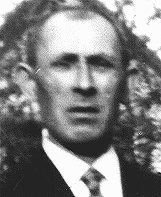
-
Robert Oelbermann
ID CardIn 1919 Robert and his brother Karl founded the Nerother Bund youth group in the Cologne region. Like other German youth groups, it aimed to bring youth closer to nature through camping and hiking. Homosexual relationships sometimes developed from the intense adolescent male camaraderie, and the Nerother Bund accepted these friendships, as did a number of German youth groups at the time. 1933-39: Soon after the Nazis took power in 1933, they dissolved all independent youth groups and urged the members to…
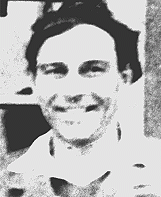
-
Frederick Dermer
ID CardFrederick was born to a Jewish family in the Austrian capital of Vienna. His father died when he was a baby, and he and his mother moved into an apartment with Frederick's widowed grandfather. As a young boy, Frederick attended a Viennese public school. 1933-39: Frederick was a rambunctious child. Once, when his grandfather was baby-sitting, Frederick used a silk lampshade as a "parachute," and jumped from the top of the wardrobe closet. That was the last time Frederick's grandfather would baby-sit.…

-
Beads used by a Dutch Jewish girl in hiding
ArtifactThese tiny black, white, gold, and clear glass beads were used by Rachel “Chelly” de Groot from November 1942 to April 1944 and recovered by her brother Louis after the war. Chelly used the beads to make handicrafts. On November 16, 1942, Chelly, then 15, Louis, 13, and their parents Meijer and Sophia left Arnhem and went into hiding after the Dutch police warned them of a raid. Meijer and Sophia hid in Amsterdam while Chelly and Louis moved around to different locations. In summer or fall 1943,…
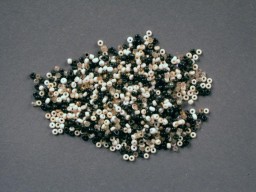
-
Maria Nemeth
ID CardMaria's parents lived in Szentes, a town in southeastern Hungary, located 30 miles from the city of Szeged. Her mother, Barbara, was born in the neighboring town of Hodmezovasarhely, but moved to Szentes when she married. Maria's father was a dentist. 1933-39: Maria was born in 1932. In 1937 her mother took in a young Austrian woman who lived with the family and helped Maria learn German. 1940-44: In March 1944 German troops occupied Hungary. Members of the Hungarian fascist party, Arrow Cross,…

-
Eva Heyman
ID CardThe only child of a cosmopolitan Hungarian Jewish couple, Eva grew up in a city on the border between Romania and Hungary. Nearly one-fifth of the city's population was Jewish. Eva was a small child when her parents, Agi and Bela, divorced, and she went to live with her grandparents. 1933-39: After the divorce, Eva saw little of her mother, who remarried and moved to Budapest. She also rarely saw her father, who lived on the other side of the city. Eva lived with her grandmother and grandfather near the…
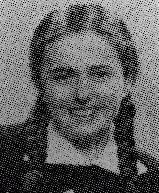
-
Henry Morgenthau Jr.
ArticleHenry Morgenthau Jr had a key role in creating and operating the War Refugee Board, a government agency tasked with rescuing and providing relief for Jews during the Holocaust.
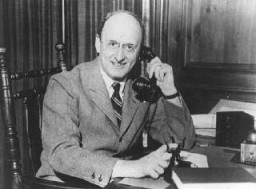
-
Frances Perkins
ArticleFrances Perkins was FDR's secretary of labor. Learn about her role in the rescue of European Jews whose lives were threatened by the Nazi regime.

-
Dawid Sierakowiak
ArticleYoung people's diaries capture some of the most heartbreaking experiences of the Holocaust. Learn about the diary and experiences of David Sierakowiak.
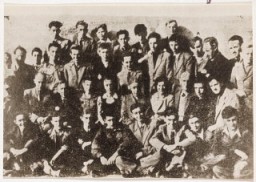
-
Dress Worn by a Hidden Child
ArtifactA blue and white child's dress worn by Sabina Kagan while living in hiding with the Roztropowicz family in Radziwillow, Poland, during World War II. Her rescuers used doll's clothing to make this dress. Sabina was just an infant when SS mobile killing squads began rounding up Jews in the Polish village of Radziwillow in 1942. Her parents persuaded a local policeman to hide the family. The policeman, however, soon asked the Kagans to leave but agreed to hide baby Sabina. Her parents were captured and…

-
John Dolibois describes attitude of captured Nazi leaders
Oral HistoryJohn Dolibois immigrated to the United States in 1931 at the age of 13. After graduating from college, Dolibois joined the 16th Armored Division of the US Army. Due to his German language skills, he became involved in military intelligence. He returned to Europe in this capacity toward the end of World War II. Dolibois interrogated German prisoners of war, including leading Nazis, in preparation for the postwar trials of war criminals. He was later appointed US ambassador to Luxembourg, his birthplace.
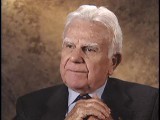
-
German territorial losses, Treaty of Versailles, 1919
MapView map showing German territorial losses following the Treaty of Versailles after World War I. Learn how the treaty affected lands controlled by Germany

-
Adolf Eichmann: Key Dates
ArticleAdolf Eichmann was a key figure in implementing the “Final Solution,” the Nazi plan to kill Europe's Jews. Learn more through key dates and events.

-
Krakow Ghetto: Key Dates
ArticleExplore a timeline of key events during the history of the Krakow ghetto in German-occupied Poland.
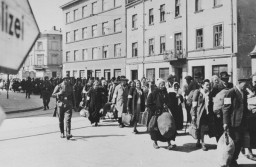
-
Bergen-Belsen: Key Dates
ArticleExplore a timeline of the history of the Bergen-Belsen camp in the Nazi camp system. Initially a POW camp, it became a concentration camp in 1943.
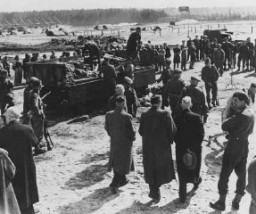
-
Hungary after the German Occupation
ArticleThe Nazis invaded Hungary in 1944 to prevent the government from negotiating an armistice with the Allies. Learn more about conditions in occupied Hungary.

-
Riga
ArticleGerman forces occupied Riga, Latvia in July 1941. Learn more about the establishment of the Riga ghetto, mass shootings of Jews, and Jewish resistance.

-
Tower of Sephardic faces: The Jewish community of Monastir, Macedonia
ArticleOn March 11, 1943, over 3,000 of Monastir’s Jews were deported to Treblinka. Learn more about the history of the community and postwar memorialization.

-
Rescue and Resistance
ArticleWhile some European Jews survived the Holocaust by hiding or escaping, others were rescued by non-Jews. Learn more about these acts of resistance.

-
1939: Key Dates
ArticleExplore a timeline of key events during 1939 in the history of Nazi Germany, World War II, and the Holocaust.
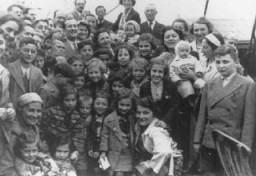
-
1945: Key Dates
ArticleExplore a timeline of key events during 1945 in the history of Nazi Germany, World War II, the Holocaust, and liberation and the aftermath of the Holocaust.

